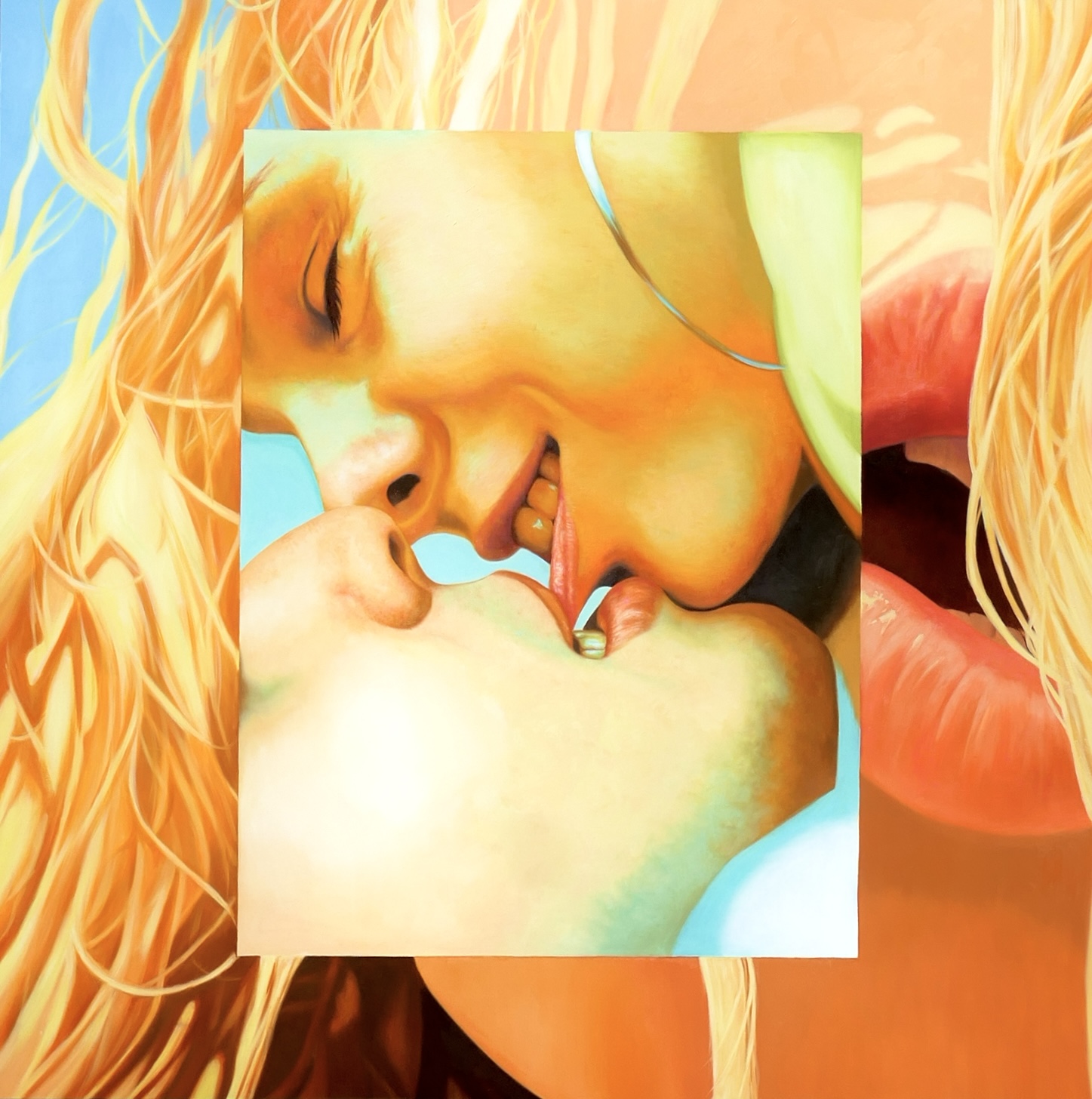자동 조정된 마음
2024. 4. 24 - 5. 31 | [GALLERIES] Peres Projects Milan
함 게르데스

Installation View of ‘The Autotuned Mind’
페레스프로젝트는 함 게르데스(1994년 독일 다름슈타트 출생)의 ≪자동 조정된 마음 The Autotuned Mind≫ 개인전을 개최한다. 본 전시는 갤러리와 함께하는 네 번째 개인전이자 밀라노에서의 첫 전시이다.
“우리의 생각을 기술적으로 완벽하다고 인식되도록 조정할 수 있다면 그 생각들은 어떤 모습일까?”
“이성적 사고와 형이상학적 상상 사이의 미묘한 경계를 넘나드는 우리가 본연의 아름다움을 어떻게 파악할 수 있을까?”
“우리가 완전히 인식하지 못하는 모양과 형태를 마주했을 때 종종 느끼는 독특하고 특별한 기이함을 즐길 수 있으면서도, 여전히 우리 내면의 익숙한 감각을 일깨울 수 있을까?”

Hallucinations, 2023
전시 ≪자동 조정된 마음 The Autotuned Mind≫ 출품작에 대해 함 게르데스와 나눴던 대화를 떠올리며 내 마음속을 맴돌던 질문 중 일부이다. 그리스 칼리테아에 있는 그의 작업실에서 겨우내 서서히 형태를 갖춰 나간 회화에서 필자는 자유에 휩싸인 생각과 씨름하며 고심한 풍부한 시각적 표상이 떠오르는 것을 볼 수 있었다. 게르데스 특유의 물감을 붓는 기법으로 유동성이 강조된 풍경은 우리 마음이 이해할 수 있지만 완전히 설명할 수는 없는 레퍼런스를 떠올리게 하여 관찰자에게 존재론적 범주라고 정의하고자 하는 묘한 느낌을 만들어낸다. 게르데스는 관찰자의 마음이 의미의 방향성을 잃고 헤매는 순간을 교묘하게 만들어낸다. 그는 모든 구상적 요소를 갖췄지만 의미를 상실한 레퍼런스를 제시하는데, 이는 추상적 구성안에서의 구심점으로서 재맥락화될 뿐이다. 우리가 보고 있는 형태와 그 기표 사이의 내적 기호학적 긴장을 통해 회화의 긴장감을 우리가 모방하면서 우리에게 탐구심과 호기심을 일깨워준다. 우리는 회화를 가득 채우는 레퍼런스들을 무시할 수도 없지만, 무시하지도 않고, 작품에 대해 더 넓고도, 덜 전형적인 이해로 이끌리게 된다.

Agent Arena, 2023
게르데스 작품의 주요 업적은 우리에게 친숙한 것, 즉 우리 생각을 형성하는 방식에 형태를 부여하는 방법을 탐구하는 것이다. 이를 통해 그가 창조하는 공간에 마법과 같은 생각과 이성적이고 과학적인 사고가 합쳐지고, 우리의 감정적 투쟁과 습득한 지식이 만나 신화가 해독되고 재해석된다. 게르데스의 접근 방식에서 독창적인 점은 여러 역사적·신화적 시기에서 차용한 레퍼런스를 우리가 자연스럽게 미래와, 항상 변해가는 무언가와 연결 짓는 매끄러움에서 크게 영향을 받은 미학과 밀접하게 엮는 것이다. 이에 필자는 이 마지막 요소가 있는 이번 전시작들의 특별한 특성이 바로 우리 마음을 인도하고 어지럽히는 동시에 확장된 공간을 상상할 수 있도록 이끄는 능력에 있다고 생각한다. 건축적 요소를 조합하여 가상의 중심을 만들어 처음에는 편안함과 안전함을 주는 <사인파 무제 Sinus Untitled>(2024)에서처럼 게르데스가 만든 표면은 때때로 기계적인 여운을 남긴다. 그러나 자세히 살펴보면, 상상된 중심 주변의 평면들이 미묘하게 겹치고 합쳐지면서 처음에 우리가 편안함을 느꼈던 바로 그 시각 축의 타당성이 부정되고 부서진다. <나르키소스 Narcissus>(2024)와 같이 다른 예를 들면, 우리의 마음이 애초에 어떻게 성찰을 만들어내는지를 궁금하게 한다. 물론 우리가 마주한 것은 고대 나르키소스 신화를 전통적으로 읽어내는 것은 아니지만, 만약 그렇다면, 서로를 비추는 두 가지 모습을 어떻게 이해해야 할까? 어느 것이 ‘진실’이며, 이 정도로 다른 만큼 우리는 상단의 경직성을 믿어야 할까, 아니면 하단의 유동성을 믿어야 할까? 둘 사이에 형성된 ‘이상한’ 친밀감이 형성되어 위계와 우위에 대한 의문을 넘어선다. 게르데스의 전작을 상기시키는 <무지갯빛의, 에코 Echo, Iridescent>(2024)는 이번 전시의 다른 작품들과 일관된 구성과 내러티브를 드러내며, 이 연작만큼 완전히 변화하지는 않았지만, 이러한 생각들이 이미 그의 작업 속에 상당 부분 존재하고 있었음을 시사한다.

Sinus Untitled, 2024
<절반의 아가페 Agape Halfway>(2024)는 게르데스의 시각 연구를 단적으로 보여주는 작품이다. 미묘한 레퍼런스의 상호작용, 다양한 기법의 조화로운 사용, 대단히 강렬한 구성을 통해 이 작품은 ‘중간’에 나타나는 ‘보편적 사랑’이라는 이상함으로 가득한 낯설지만 익숙한 세계로 보는 이들을 빠져들게 한다.
글: 크리스티안 옥세니우스(Christian Oxenius)
Peres Projects Milan
Piazza Belgioioso 2, 20121 Milan, Italy
+39 02 9434 0158
[GALLERIES] Peres Projects Milan
- Dates
- 2024. 4. 24 - 5. 31











